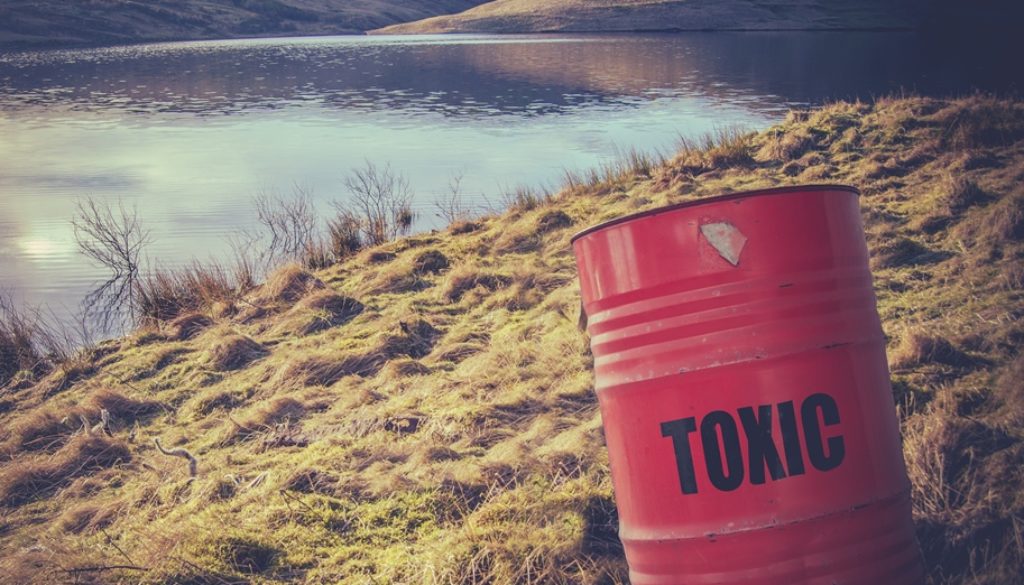EPA Ignores Lessons From Chemical Spills in Hurricane Harvey
By Jared Knicley, Natural Resources Defense Council
About a year ago, Hurricane Harvey made landfall in Texas. The category 4 storm brought damaging winds and devastating storm surges, and then stalled over southeast Texas, dumping torrential rains for days in the areas surrounding Houston. The National Oceanic and Atmospheric Administration estimates that Harvey had total cost of $125 billion, making it the second-costliest hurricane on record. During and immediately following the storm, chemical plants reported that over 365 tons of hazardous chemicals were released into the air, onto land, or in the water. These self-reported totals, however, likely significantly understate the number, scale, and impact of the chemical releases during the hurricane.
Catastrophic pollution events like those caused by Hurricane Harvey demonstrate the need for safeguards to prevent and respond to chemical spills. Unfortunately, national requirements like those don’t exist, and the Trump administration is fighting the establishment of such standards.

The Clean Water Act demanded federal regulations “as soon as practicable” after 1972 to prevent and contain spills of hazardous substances from onshore facilities. The Environmental Protection Agency was charged with developing these rules, but for over forty years, EPA ignored its responsibility. As a result, there are no comprehensive federal regulations requiring chemical facilities to prevent and minimize harm from toxic chemical spills caused by equipment failure, operator error, or severe weather. Meanwhile, industrial facilities across the country continue to spill toxic chemicals not just during disasters like Hurricane Harvey, but daily.
Concerned about the risks to public health and the environment from these spills, NRDC, along with our partners the Environmental Justice Health Alliance (EJHA) and People Concerned About Chemical Safety (PCACS), sued EPA in July 2015 to force the agency to issue its long-overdue spill-prevention rules for hazardous substances. We settled that case in February, 2016, with EPA agreeing to issue a “notice of proposed rulemaking pertaining to the issuance of the Hazardous Substance Regulations” no later than June 2018, and to take final action by October, 2019.
In June, EPA unveiled a shocking proposal: to do nothing. No action despite its agreement with citizen groups. No action despite the Clean Water Act’s direct command that EPA “shall issue regulations” to prevent chemical spills. And no action despite the fact that chemical spills continue to occur multiple times a day, every day across the United States. My NRDC colleagues Erik Olson and Daniel Rosenberg wrote about the proposal when it came out.
EPA’s central argument in support of its do-nothing approach is that a mishmash of other programs is good enough that it’s unnecessary to do what the law requires. Baloney. EPA admits that it doesn’t know the most basic information about the facilities it is refusing to regulate: where they’re located, what types of chemicals they are storing, and what types of spill-prevention measures—if any—they are already implementing. And EPA has done nothing to get that essential information.
Also, the patchwork of requirements that EPA uses to justify ignoring the law is full of holes. The dozen-or-so regulations that EPA identifies either are not aimed at spill-prevention at all, cover no or only limited numbers of hazardous substances, or cover only a small subset of industrial facilities that have these dangerous materials. It’s like if an agency was required to put out safety training standards for truckers and decided that it was enough that lots of people have licenses to drive a car and have seen “Smokey and the Bandit.”
More than forty-five years after Congress mandated spill-prevention rules for industrial facilities storing toxic chemicals, EPA has still issued none. Worse, in the aftermath of Hurricane Harvey, EPA wants to continue to ignore its obligation indefinitely.
It’s time for that to change. This Friday, NRDC, EJHA, PCACS, and dozens of other environmental, environmental justice, and public health organizations are submitting comments demanding that EPA abandon its do-nothing proposal and finally comply with its duty to issue strong regulations protecting our communities, water supplies, and the environment from toxic chemical spills.
And you can lend your voice to this fight. Click here for information on how to add your comment to EPA, which is accepting input until Friday, August 24th.

